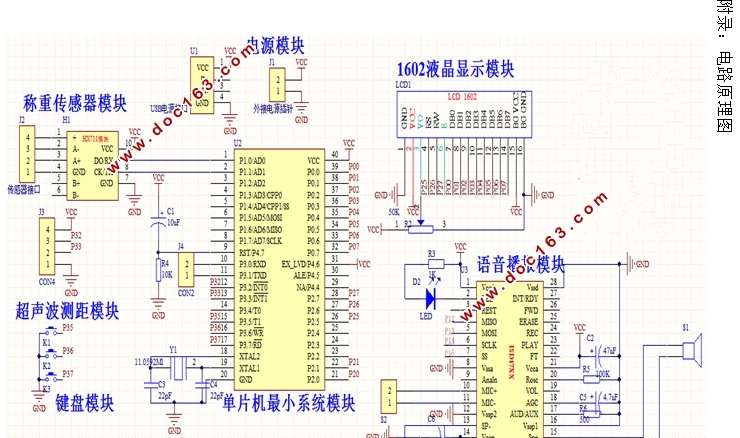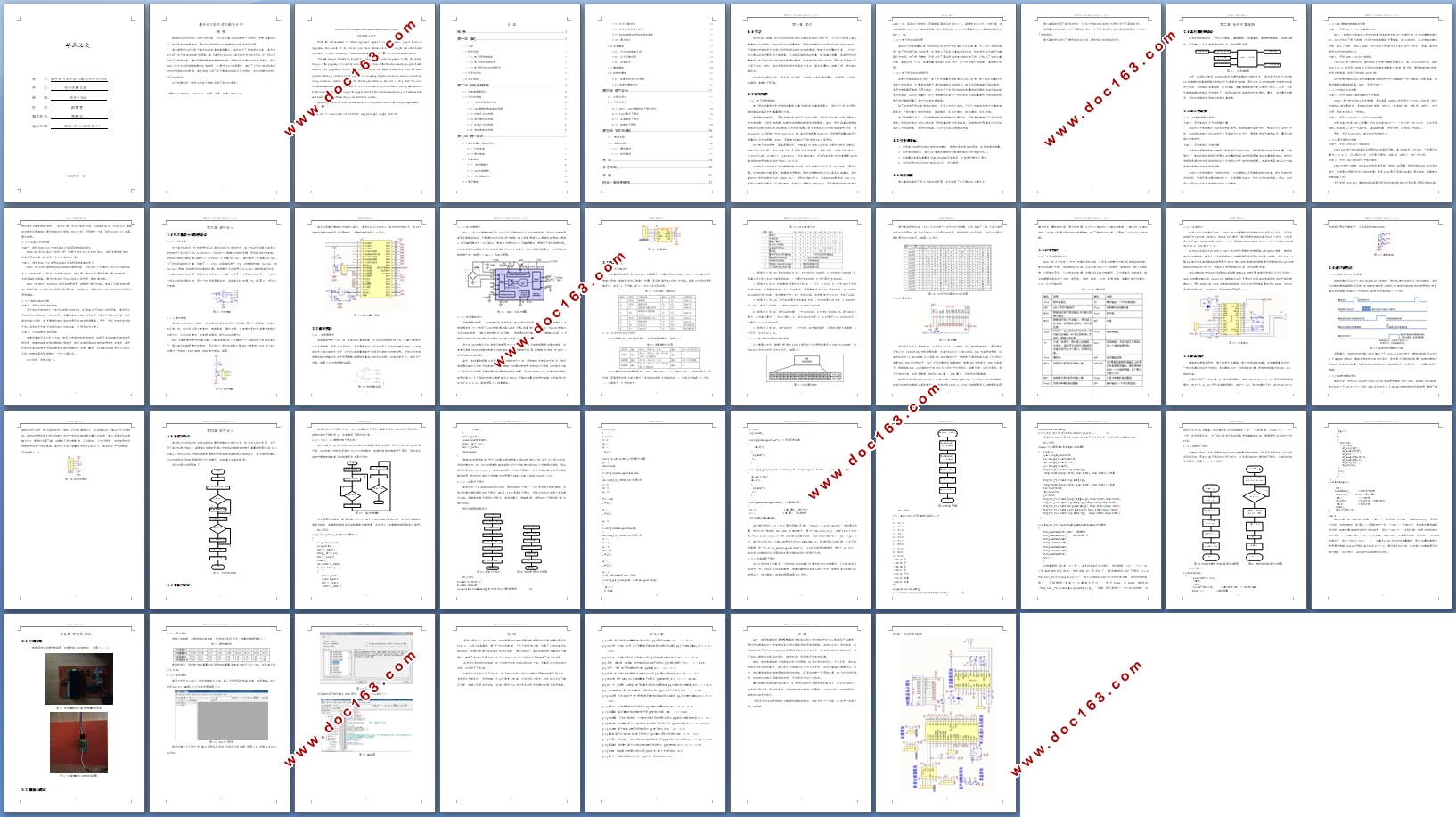基于单片机的多功能电子秤设计

1.无需注册登录,支付后按照提示操作即可获取该资料.
2.资料以网页介绍的为准,下载后不会有水印.资料仅供学习参考之用.
密 惠 保
基于单片机的多功能电子秤设计(任务书,开题报告,外文翻译,论文11200字)
摘 要
随着科技的进步和生活水平的提高,人们在注重生活品质提升的同时,也愈加重视身高、体重等身体健康指标,因此也越来越关注与健康相关的智能家居装置。
本次课题设计的是基于单片机的身高体重测量仪。首先给出了整体设计方案,其次详细介绍了各个模块的功能和原理。本方案把STC89C52单片机作为系统主控芯片,用应变电路压力检测体重,通过高精度模数转换模块转换,采用超声波模块完成身高检测,利用ISD1730芯片实现测量结果的语音播报,并通过1602液晶显示,满足了人们对体重和身高的时时检测和关注需求。本文详细介绍了各个模块的组成及工作原理,并对软硬件的设计做了详细描述。
运行效果表明,所设计的各个模块达到了设计的要求。
关键字:52单片机、LCD1602、体重、身高、称重、ISD1730
Microcontroller-based multi-functional electronic scales
ABSTRACT
With the advancement of technology and improve living standards, people focus on upgrading the quality of life, but also pay more attention to height, weight and other health indicators, it is also increasingly concerned about the smart home devices and health-related.
The task design is based on height and weight microcontroller gauge. Firstly, the overall design of the program, followed by a detailed description of the functions and principles of each module. The program STC89C52 microcontroller as the main system chip with the strain pressure detecting circuit weight, high-precision analog-digital conversion module conversion, using ultrasonic module to complete the height detection, the use of chip ISD1730 voice broadcast measurement results, and by 1602 LCD, meet people constantly testing and attention to the needs of weight and height.This paper describes the structure and principle of each module, and hardware and software design are described in detail.
Operating results showed that each module is designed to achieve the design requirements.
Keywords: 52 microcontroller, LCD1602, weight, height, weight, ISD1730



目 录
摘 要 I
第一章 绪论 1
1.1引言 1
1.2研究现状 1
1.2.1电子秤原理结构 1
1.2.2电子秤的功能拓展 2
1.2.3电子秤存在的问题研究 2
1.3任务和目标 2 [资料来源:http://think58.com]
1.4论文结构 2
第二章 系统方案选择 4
2.1总电路框图设计 4
2.2芯片的选择 4
2.2.1 称重传感器的选择 4
2.2.2 AD模数转换电路的选择 5
2.2.3控制芯片的选择 5
2.2.4显示器件的选择 5
2.2.5语音芯片的选择 6
2.2.6测距电路的选择 6
第三章 硬件设计 7
3.1单片机最小系统的设计 7
3.1.1时钟电路 7
3.1.2复位电路 7
3.2称重模块 8
3.2.1 传感器器件 8
3.2.2 AD转换器件 9
3.2.3 称重模块设计 9
3.3显示模块 10
3.3.1芯片引脚说明 10
3.3.2芯片时序及指令说明 10
3.3.3 RAM地址映射和标准字库表 11
3.3.4 显示设计 12
3.4语音模块 13
3.4.1 芯片功能简单介绍 13
3.4.2 芯片引脚说明 13
3.4.3 语音设计 14
3.5键盘模块 14
3.6超声波模块 15
3.6.1 超声波收发时序原理 15
3.6.2超声波模块设计 15
第四章 软件设计 17
4.1主程序设计 17
4.2子程序设计 17
4.2.1 HX711 AD模数转换子程序设计 18
4.2.2 LCD显示子程序 19
4.2.3 语音播报子程序 21
4.2.4 超声波子程序 24
第五章 安装与调试 26
5.1 电路安装 26
5.2 测量与调试 26
5.2.1 硬件调试 27
5.2.2 软件调试 27
总 结 29
参考文献 30
致 谢 31
附录:电路原理图 32
[来源:http://think58.com]
